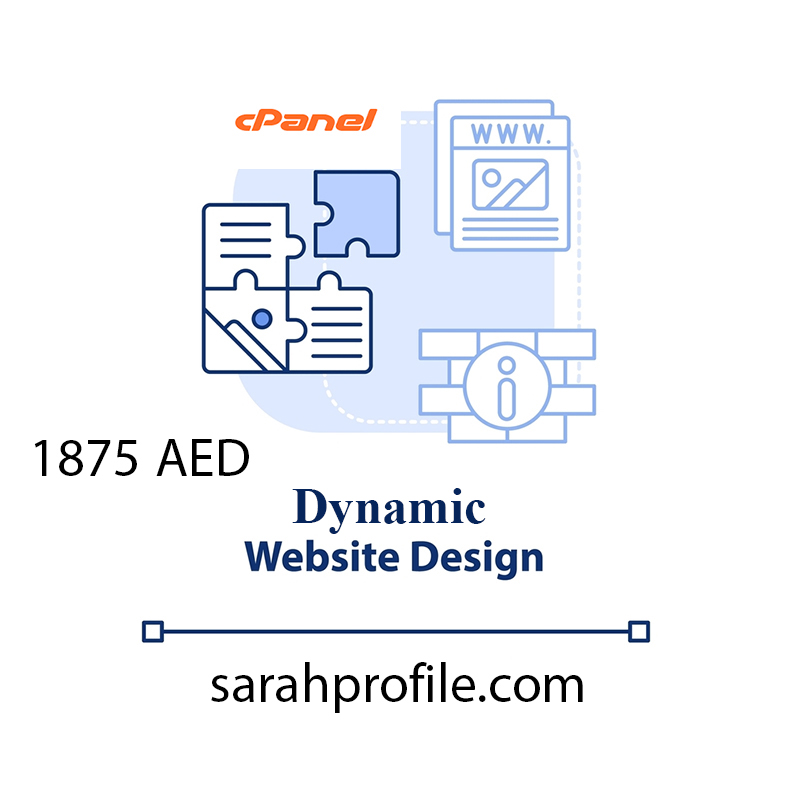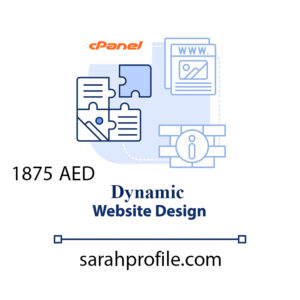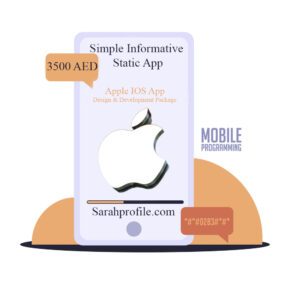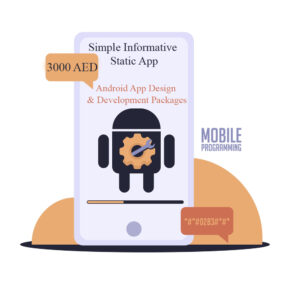Dynamic Website
Original price was: $822,00.$273,00Current price is: $273,00.
A website that displays different types of content every time a user views it. Have yours now With Free Domain & Hosting for 1 year.
Description
What is a Dynamic Website?
A dynamic website is a website that displays different types of content every time a user views it. This display changes depending on a number of factors like viewer demographics, time of day, location, language settings, and so on.
While static pages require manual updating before their contents change, dynamic websites offer unique content to visitors each time they view the site. This is done through a combination of client-side and server-side scripting.
- Client-side scripting involves code that is executed by the viewer’s browser, using scripting languages like JavaScript. This scripting is responsible for rendering changes to the webpage as a response to actions taken within it, such as mouse clicks or keyboard use.
- Server-side scripting, on the other hand, refers to code that is executed by the server before sending the content to the viewer’s browser. This affects the webpage when it is loaded or visited, like login pages, submission forms, and shopping carts.
Using both types of scripting allows modern websites to adapt to each user’s view of the page while reducing the server’s load time. Also, these scriptings are more secure, hence, you might find no or very low vulnerabilities in the network when you conduct network penetration testing.
Dynamic Website Elements

Creating a dynamic website allows you to elevate your page’s content to be more relevant and engaging for your visitors. Below are common dynamic website elements that work in a dynamic page setup:
Format changing according to your screen size
With the vast array of smart devices in the market, having a webpage that doesn’t scale well can put off visitors. Dynamic website development allows the page to display on almost any screen without compromising its visual appeal and intuitive layout. This includes rearranging buttons, reformatting text and typography, and resizing images to suit the visitor’s display.
Language changes according to what country you’re browsing from
By using certain web development tools, a dynamic web page can display in the language of the region a site visitor is viewing the page. This gives your site content a more familiar voice, as well as further personalizing the overall experience.
Custom recommendations based on what you’ve viewed before
One of the benefits of having cookies integrated into your site is that there is a wealth of information at your disposal for creating a more tailored experience on the site. Based on a user’s previous visit, a dynamic website can offer similar or related recommendations. This is useful for sites with a wide variety of content or for e-commerce platforms.
Integration of social media and offsite content
One way to add new and changing content to a site is by tapping into social media. Page plugins can display new content from your brand’s social media platforms. Site visitors can see how active your brand is, even if other onsite content isn’t as frequently updated. The addition of these active feeds also gives Google and other search engines more content to crawl through.
Dynamic visuals and animation displays
Hero images are a vital part of any website. With the right image behind the compelling copy, it can attract a site visitor’s attention almost instantly and encourage them to continue browsing. With the use of dynamic elements, you can have a slideshow of images that cycle or change upon refreshing the page. These techniques can also be applied to video content and animation.
How Google Search Uses Dynamic Elements
One of the best examples that most people already know about is Google making use of dynamic elements to provide a better experience to users. The following elements play a part in helping Google provide more personalized search results:
Location
Google makes use of a user’s IP address or previous GPS locations in order to tailor-fit results for certain search queries. The results will usually include physical businesses and places closest to the user, which is grouped together and pushed higher in the results pages.
Search and Website History
Each user’s previous searches, search engine result pages (SERPs) clicks, and browsing history are stored by Google in a personalized profile. This profile allows Google to display search results that are closer to the user’s perceived interests. It is also used to further contextualize search queries.
Device
Google’s search results will rank pages differently depending on which device the user searches on. When searching from a smartphone, the algorithm will prioritize pages that are optimized for mobile, while unoptimized pages are pushed down the ranks.
Search Ads
While Google displays paid search ads–also known as pay-per-click (PPC) ads–with organic search results, they don’t affect the number of organic results displayed. Instead, these search ads are customized to a user’s location. Users from different locations will then be served different search ads despite using the same search query.
Time of day
Google continuously updates search results to account for current content, especially for events that occur in real time. A search query for news and current events may display dramatically different results with every page refresh.
Other Google Products
With the vast amount of Google products in the market–YouTube, Drive, Blogspot, Calendar, Maps, and so on–it’s no surprise that information from these products are displayed alongside organic search results. A user searching “what time is my flight” may receive the exact time recorded in their Google Calendar.
So how many users are affected by these customized results? In 2018, rival search engine DuckDuckGo conducted a study on how SERPs are ranked differently for users. The study found that Google’s algorithm will always attempt to personalize results, no matter the user’s relationship with Google and its products. This makes it easier for brands and businesses to reach their target audiences and provide value to them.
Benefits of Dynamic Websites
Making the shift to a dynamic website has several benefits for both your business and your target audience:
More personalized browsing
One of the biggest benefits of having a dynamic website is providing users with a personalized browsing experience once they visit your website. Content and product suggestions, features for recently-viewed items, and even offering content based on location and demographics can all work towards getting visitors to stay on your page and possibly take the next step with your brand.
Easier to maintain
Dynamic websites make use of a content management system (CMS) that provides a database for content and other elements on the page. These sites also make use of scripting languages that interact with the information in the databases, making it easier to enact site-wide changes without having to make the changes one at a time.
You can upload content with ease, edit backgrounds, and other design elements, and even make changes to the site without the knowledge of coding. This makes the site much easier to maintain than its static counterparts.
Better user experience
Aside from tailoring each visitor’s browsing experience on the site, dynamic web pages enable other functionalities. Being able to edit the site according to user needs and build a more intuitive navigation are all possible through dynamic websites. Additionally, upgrading and adding more functionalities to a dynamic website can easily be done, making it good for improving the overall user experience.
Elevated professional look
While it is possible to have professional static sites, they lack the features and other elements that many users expect from a modern website. Not only do dynamic websites provide the functions and interactivity that visitors enjoy, but the ease of editing that comes with it helps take the professional look to the next level.
Get with The Times and Get Moving!
Gone are the days of static walls of text and bland pages. Now and probably for a long while, dynamic websites are in. They elevate the user experience by adapting to certain factors or actions taken onsite and delivering personalized and engaging content.
By offering a more responsive and interactive experience to users of any kind, dynamic content is the next step toward giving your audience an impactful experience.
Additional information
| Number of pages | 5 -7 Pages, 20 -30 Pages |
|---|










Reviews
There are no reviews yet.